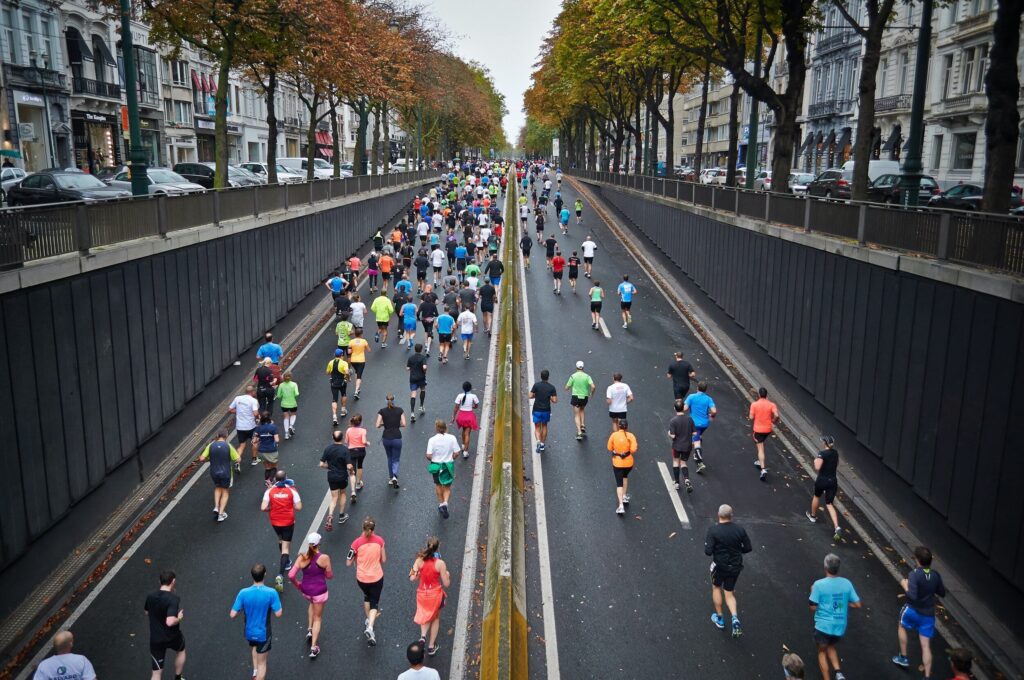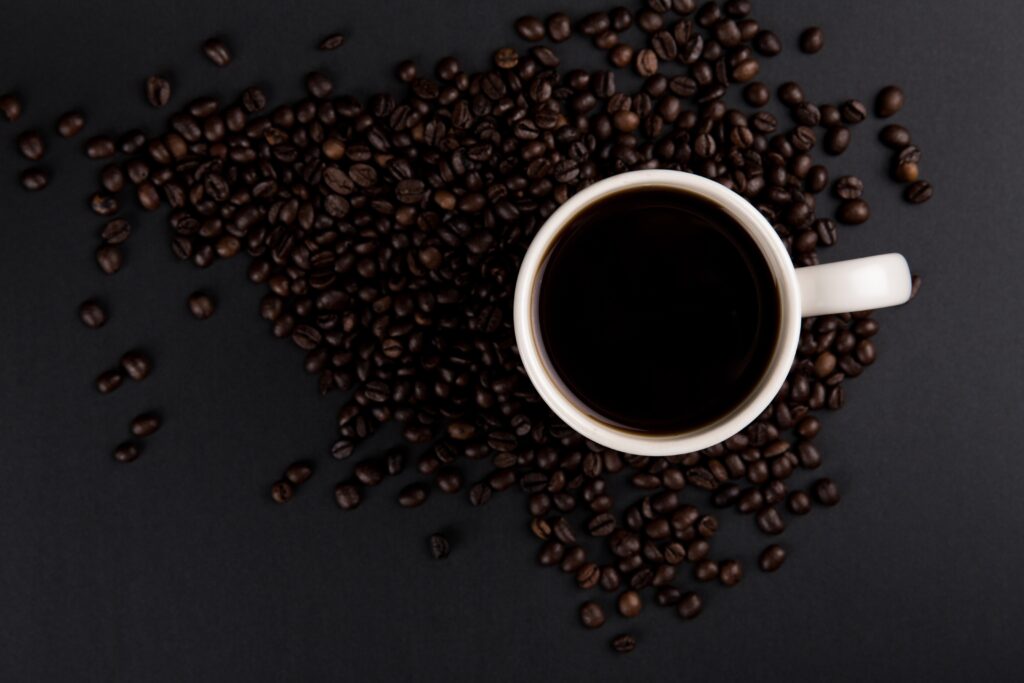Introduction
Running a marathon is a challenging task. It requires months of training, a good physical condition, as well as regulating your mind for the big changes that take place in your body over the training and on the day of the actual marathon. Nutrition becomes particularly important as it is the input that allows you to practice steadily and perform well on the day of the race, fueling the nutrients and other physiological changes that the body needs. Hydration and glucose levels, for example, become critical inside the body. On the outside, there are common complaints about nipples chafing, blisters on feet, and burning sensations in quads and shins.
What does running a marathon do to your body?
On the inside, where organs carry out their functional processes, marathons can cause a fair few changes that affect performance. Hydration levels and their perception, for example, were the focus of a 2011 study (1). In it, 70% of the subjects believed dehydration caused 1 or more instances of significant performance deterioration during a marathon. 45% of the studied group also felt that dehydration had resulted in adverse health effects. Kidneys may also suffer as a result of poor hydration as well as lowered electrolyte levels caused by endurance activities like a marathon. (5)
The immune system may be weakened in the short term while the body sustains endurance activities. This was found in a literature review and supported by a 2020 study on an adventure athlete completing a 28-week unassisted trek across Antarctica. (4) His data during the expedition indicated a dysfunctional immune response over a substantial period of physical and mental exertion while he undertook this extremely adventurous trip. However, certain researchers take this to be an example of an immune system with adaptive properties, which can be a sign of strengthening the immune response over a long-term period of time. (2)
Blood sugar, also called glucose, is a meaningful source of energy for the human body. It comes from food and drinks. Its levels typically fall and remain to a lower point for as long as 48 hours after a high-intensity exercise. Caused by the body and muscles’ need to recover, it draws glucose from the blood into the cell, keeping its presence low. (2) During a race, runners may experience a proverbial ‘wall’ around the last fifth of their race. This low point of energy comes from a sustained depletion in carbohydrates and a sharp drop in glucose levels. It is also called a ‘bonk’. (6)
Prerun fueling and why
It helps to maintain a steady level of blood sugar during a marathon. Glycemic index (GI) is a measure of how much a particular food can increase one’s blood sugar levels. To enable a state of blood sugar moderation, the last meal 2 hours before a marathon should be one with a low GI. (7) Typically, foods high in fat, fibre, or protein have a low GI. In this 2008 study, the participants who ate a low GI meal achieved a faster race completion time than those who ate a meal with a higher GI. Further, the athlete participants burned 9.5% fewer carbohydrates and 17.9% more fat. This nutrition hack can be a suitable strategy to improve race performance.
Another perspective on how to eat before a marathon is to ‘carb-load’. This method of fueling involves eating carb-heavy meals to increase endurance by storing more energy before a big athletic event or activity. The depth of energy found in carb-loading aims to help in completing an athletic endeavour with less fatigue and improved athletic performance. Carb-loading is best suited to endurance athletes, ie, those participating in something over 90 minutes in duration of exertion. (14)
Early & mid-run fueling and why
A recommendation on marathon fueling is 60 grams of carbs per hour. (9) It is recommended that fueling begin as early as 15 minutes into the race since a runner may not be suited to handle the demands of heavy fueling. For example, a typical energy gel contains about 25 grams of carbs, so to consume the 60 grams as fuel for an hour, one would need to eat 2 gels as well as have an energy drink. A key to fueling with or consuming carbs is to hydrate. (21)
Hydration serves critical functions during and after a race. An average runner may lose between 2 and 5 kilos of ‘water weight’ through sweat after a complete marathon. (10) Further, weather conditions may play a role, for example, humid or warm weather can cause more sweating, and would therefore require more replenishment. Good hydration levels can be maintained by drinking to thirst, or can be replenished at roughly 750 ml/hour. (13) Hydration processes carbohydrates consumed as fuel for the marathon and maintains body functionality. It can also help with processing other consumed forms of caffeine and sugar.
Midrun is a period when one can begin to experience and prevent the ‘bonk’, a colloquialism indicating a tremendous drop in energy. This is concurrent with a sharp reduction expected in glycogen stores, which is likely to be going towards empty after 2 hours of running. (12) To prepare for mid–run, it is recommended to start fueling in the early part of the run itself, beginning at 30 minutes into the run. The criteria for such fueling is energy and easy digestion. While some of what constitutes these criteria may be subjective, sugar gels with or without caffeine tick these boxes. (9) Gels with glucose and fructose carry the added benefit of transporters to utilise fructose as well. Such gels can be consumed for near-instant energy, with the caffeine component providing extra energy towards the latter part of a marathon.
Late run & post-run fueling and why
It is common to experience difficulty towards the end of a marathon for a number of reasons. One can experience trouble from fueling or managing fuel, hydration, fatigue, and a temporarily compromised immune system. At this point in a race, at the last 20% of it, glycogen levels are depleted and most carbohydrates are coming from a gel or similar. Some of any caffeine consumed could be utilised at this point as an energy source. Stored body fat may be utilised thoroughly as well. Hydration becomes more critical, although it may depend on weather conditions as well.
On completing the marathon, recovery becomes the first and immediate criteria. Cramps are a common complaint. (17) Despite the likelihood of marathon nausea, there are methods to re-energise and set your tired body on the path to recovery. The first is to have a small, easy-to-digest snack with carbohydrates and protein. (16) This maintains blood sugar levels, restores muscular glycogen, and helps muscle tissue heal. Ideally, such a snack should be consumed in the first hour after the race and have a carbs to protein ratio between 3:1 and 4:1. Fluids are an essential part of the recovery as well and can contrast the temperature at which the marathon was run.
Protein is an indispensable part of fueling for marathoners. A sports nutrition statement made public by the International Association of Athletics Federations (IAAF) stated that a recommended range of protein consumption stood between 1.3 to 1.4 grams for a kilo of the athlete’s weight. Dr. Leslie Bonci, a nutrition consultant says: “With the breakdown that endurance athletes can experience, and perhaps the over-reliance on carbs and inadequate protein intake, the need for protein increases.” For an athlete of 75 kilos, a recommended protein intake in the range of 150 grams should be factored in their recovery meals after a marathon. (20)
Conclusion
Running a marathon and preparing for it impacts hydration, kidney function, and immunity among other bodily functions. Different stages of a marathon may require different and individualised fueling, and can be arrived at through some experimentation. Before a marathon, the two broad eating strategies are to consume food groups with low glycemic index, ie, that are slow to raise blood sugar levels, or to carb-load, ie, eat food heavy in carbohydrates. Early and mid-marathon, consuming carbohydrates and hydrating to process them becomes essential as early as 15-30 minutes into the run. Caffeine can provide a helpful burst of late-run energy. After a marathon, recovery is a key criteria. This can be aided by a snack shortly after the finish line in a 3:1 or 4:1 carbs to protein ratio. Fluids help the recovery as well, and are recommended in a temperature opposite the weather the marathon has been run in. For a post-marathon meal, between 1.2 and 2 grams of protein for each kilo of the runner’s body weight is recommended.
References
- https://www.ncbi.nlm.nih.gov/pmc/articles/PMC3418934/
- https://www.healthdigest.com/456607/heres-how-much-running-you-really-need-to-do-to-stay-healthy/
- https://pubmed.ncbi.nlm.nih.gov/10910293/
- https://www.mdpi.com/2227-7382/8/1/4
- https://www.theatlantic.com/health/archive/2017/03/marathon-kidneys/520962/









